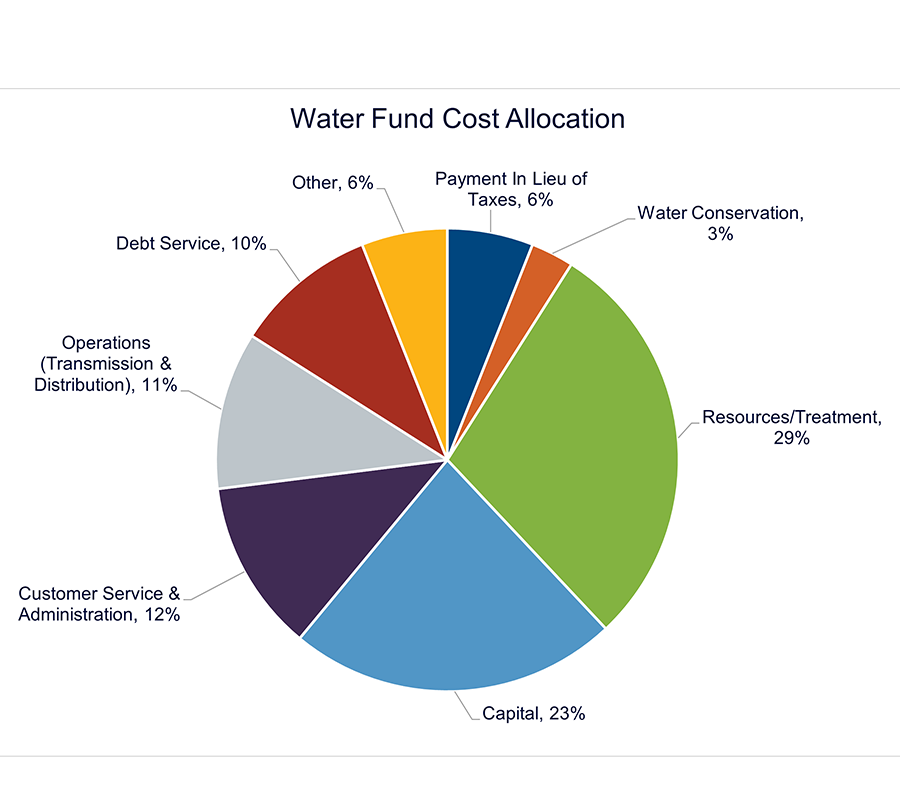Water#
The pie chart below depicts the allocation of Utilities' Water funds for the current budget.
The chart excludes depreciation and transfers.

Definition of Terms#
-
Funds to acquire or upgrade the water transmission and distribution system's physical assets.
-
Covers costs for customer service, billing, community engagement, regulatory government affairs, safety, security and wellness, and costs associated with the executive director's office. The percentage of contribution to CS&A by each utility service area differs depending on ratio of revenues to the overall Utilities budget.
-
Covers payments for revenue bonds, which pay for capital improvements.
-
Covers the costs to operate and maintain the transmission and distribution of water throughout the City's service territory.
-
This category includes transfers to the City's General Fund for administrative services such as human resources, legal, finance and the City Manager's Office. It also includes costs associated with insurance, personnel, investments, bad debt, contingencies, Poudre Fire Authority services, and other miscellaneous administrative costs.
-
A 6 percent payment, based on water revenue, paid to the City's general fund. The payment compensates for what the City would be paid in taxes and franchise fees if the utilities were privately owned.
-
Includes the cost and administration of all conservation programs under the Water Efficiency Plan.
-
Includes costs to manage and administer the City's raw water portfolio, as well as water treatment and operations.
-
What does Payment is lieu of taxes (PILOTs) mean?
PILOTs are a 6 percent payment, based on electric, water and wastewater revenue paid by Utilities to the City's general fund. This payment compensates for earnings the City would receive in taxes and franchise fees if Utilities were privately owned. There are no PILOTs for stormwater, since there are no private businesses operating a stormwater utility.
What is Customer Service and Administration (CS & A), and why is it a different percent for each fund?
CS & A covers costs for customer service, billing, community engagement, regulatory government affairs, safety, security and wellness, and costs associated with the executive director's office. The percentage of contribution by each utility service area varies depending on the ratio of revenues to the overall Utilities budget.
Once debt service is paid, will rates go down?
Debt service is used to finance capital improvements. As bonds are paid, Utilities may issue additional debt to cover the cost of other capital improvements outlined in a City-wide strategic capital improvement plan. Debt service may differ in the service areas due to varying needs for capital improvements.
Did You Know?
Every 2 degrees higher you set your air conditioner can save up to 14% on cooling costs.
It is recommended that you aerate your lawn once a year.
Pouring cooled fats, oils and grease (FOG) into a sealable container and putting it in the trash or taking used oil to a recycling center can help prevent costly sewer backups.